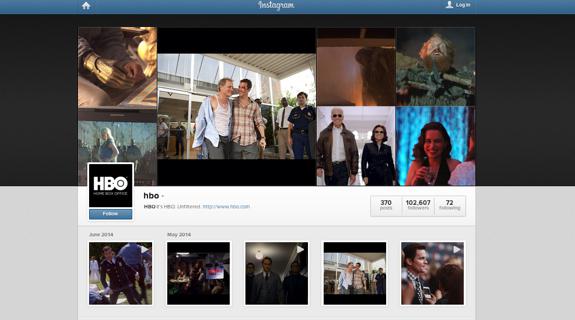Instagram, Vine and Facebook video content is still a relatively new concept for many marketing departments, as they adapt to rapidly changing platforms and new rules of the road. What to share? How much to share? Are hashtags effective or annoying?
Sabrina Caluori, VP of digital and social media at HBO, shared her experience and a few examples of social done right in her Promo Boot Camp session “Think Thinking Social Isn’t Your Job? Think Again!” at The Conference 2014 on Wednesday morning.
“How many of you hate Facebook? How many of you still use it?”
With everyone’s hands still in the air, Caluori continued.
“We are living in a world where we are drowning in media,” said Caluori. “But most of the media we consume every day is not made by people like us anymore. It’s made by people like this:”
YouTube star Shane Dawson is only one of many independent content creators out there, earning loyal followers and often garnering as many views per video as the shows and promos TV creative make every day. “He is making videos about his hair, and people watch it.”
SPREADABLE CONTENT:
So how do promo creators make content that’s spreadable? Caluori, avoiding the term “viral” (it’s too much of a misnomer) prefers “spreadable content” – social posts, specifically video, that can be created by a brand and curated by followers.
That spreadable content should:
-Be designed to spread
-Provide value or social currency
-Speak to a passionate community
-Be timely or relevant
-Start a conversation
One example from the world of TV is the very recent net neutrality video from HBO’s “Last Week Tonight with John Oliver:”
“This hits every one of those principles for us,” said Caluori. “It provided value to the community because net neutrality is an issue that is affecting all of us in digital in one way or another. John Oliver actually simplified it in a way that made sense and was entertaining. The digerati was all over this, the news was all over this. They posted it and spread it for us hours after it was posted.”
INSTAGRAM:
When designing content for mobile, whether that’s Instagram, Facebook or Vine, think about the feed. Does it stand out? It needs to be compelling enough for people want to actually watch. According to Caluori, “The best and most successful Instagram videos feel like they belong on Instagram.” Some of the best brands out there right now?
Nike:
MTV:
Beyoncé:
These three brands successfully reach out to a Millennial audience through a platform they’re already using to provide video-specific content that makes sense to each brand and blends well with each of their feeds at the same time.
VINE:
Vines, said Caluori, are time consuming to create, but worth it due to their ability to boost a brand’s following in the short six seconds these posts are allotted. Stop-motion video, when done correctly, can bring attention to media brands, but especially to companies that may not have a natural video relationship. Some of the best out there now, she said, are as follows:
VH1:
Lowe’s:
Target:
Vines, taken on the user’s phone and uploaded to Vine and/or Twitter via mobile, can sometimes be slow to find audiences, according to Caluori. “Vine is the one that confounds people in my building,” she said. When talent gets involved, however, it gets easier to convince people of its reach and effectiveness. For example, after the infamous Red Wedding episode of HBO’s “Game of Thrones,” actress Maisie Williams (who plays Arya Stark) posted her own Vine, addressing the drama of the episode (don’t worry, no spoilers). The video got massive pickup across the Web and spread the HBO brand in a genuine way to cause a positive reaction online without feeling forced for online fans.
Tags:













































__twocolumncontent.jpg)











